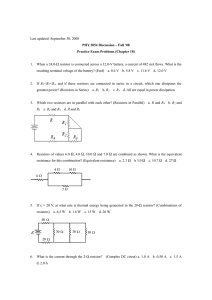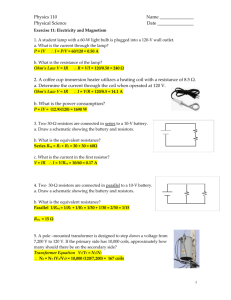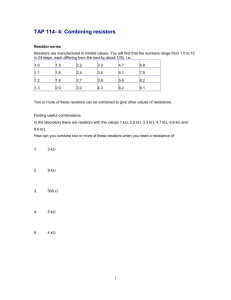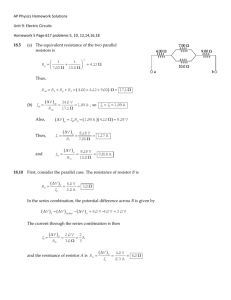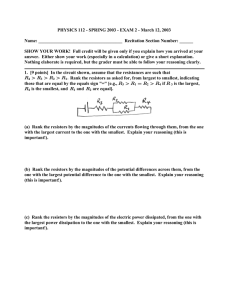You have seen a preview of this in laboratory. ... combining resistors in series and parallel – in a similar... Simple series and parallel combinations of resistors
advertisement
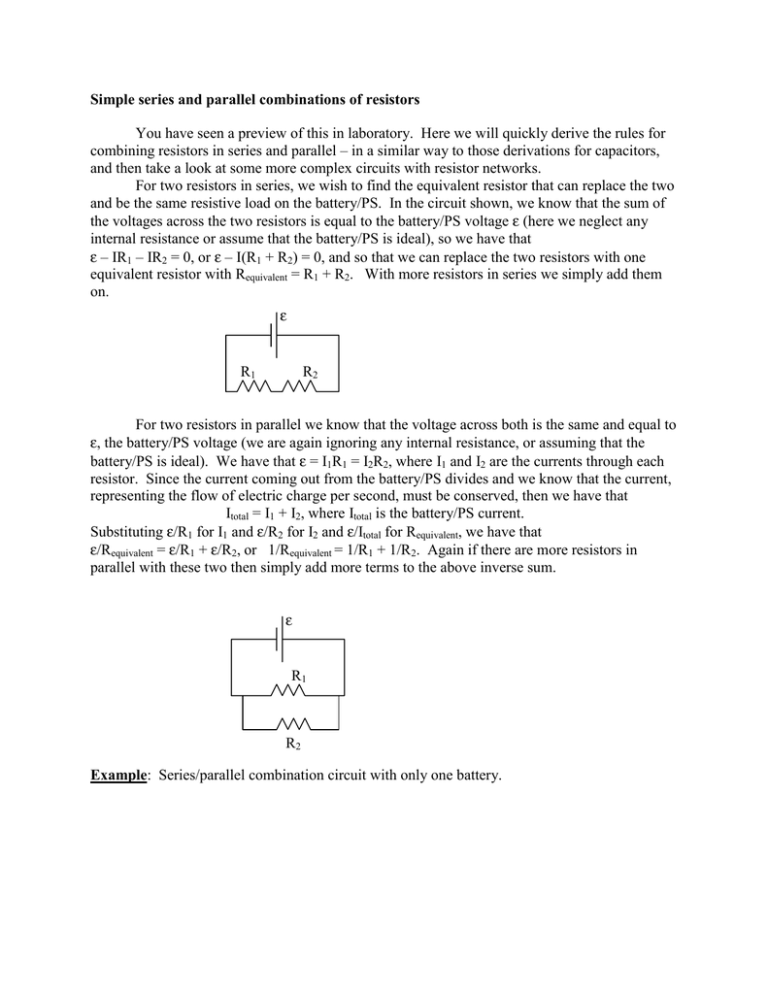
Simple series and parallel combinations of resistors You have seen a preview of this in laboratory. Here we will quickly derive the rules for combining resistors in series and parallel – in a similar way to those derivations for capacitors, and then take a look at some more complex circuits with resistor networks. For two resistors in series, we wish to find the equivalent resistor that can replace the two and be the same resistive load on the battery/PS. In the circuit shown, we know that the sum of the voltages across the two resistors is equal to the battery/PS voltage ε (here we neglect any internal resistance or assume that the battery/PS is ideal), so we have that ε – IR1 – IR2 = 0, or ε – I(R1 + R2) = 0, and so that we can replace the two resistors with one equivalent resistor with Requivalent = R1 + R2. With more resistors in series we simply add them on. ε R1 R2 For two resistors in parallel we know that the voltage across both is the same and equal to ε, the battery/PS voltage (we are again ignoring any internal resistance, or assuming that the battery/PS is ideal). We have that ε = I1R1 = I2R2, where I1 and I2 are the currents through each resistor. Since the current coming out from the battery/PS divides and we know that the current, representing the flow of electric charge per second, must be conserved, then we have that Itotal = I1 + I2, where Itotal is the battery/PS current. Substituting ε/R1 for I1 and ε/R2 for I2 and ε/Itotal for Requivalent, we have that ε/Requivalent = ε/R1 + ε/R2, or 1/Requivalent = 1/R1 + 1/R2. Again if there are more resistors in parallel with these two then simply add more terms to the above inverse sum. ε R1 R2 Example: Series/parallel combination circuit with only one battery.




